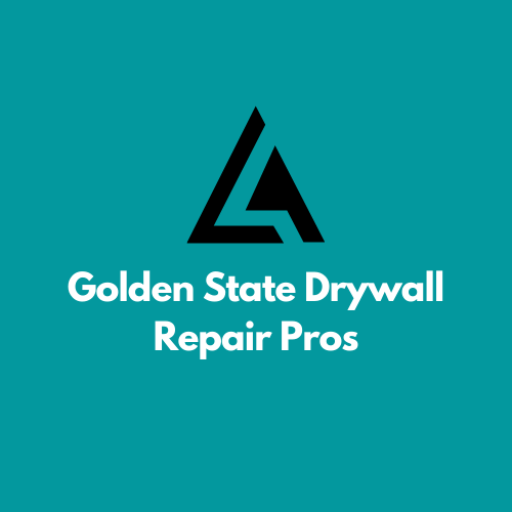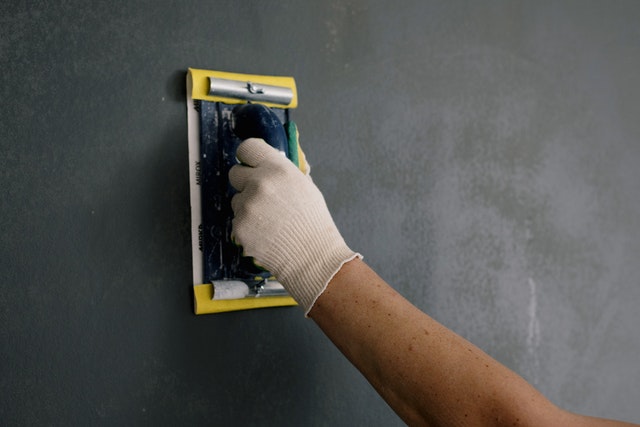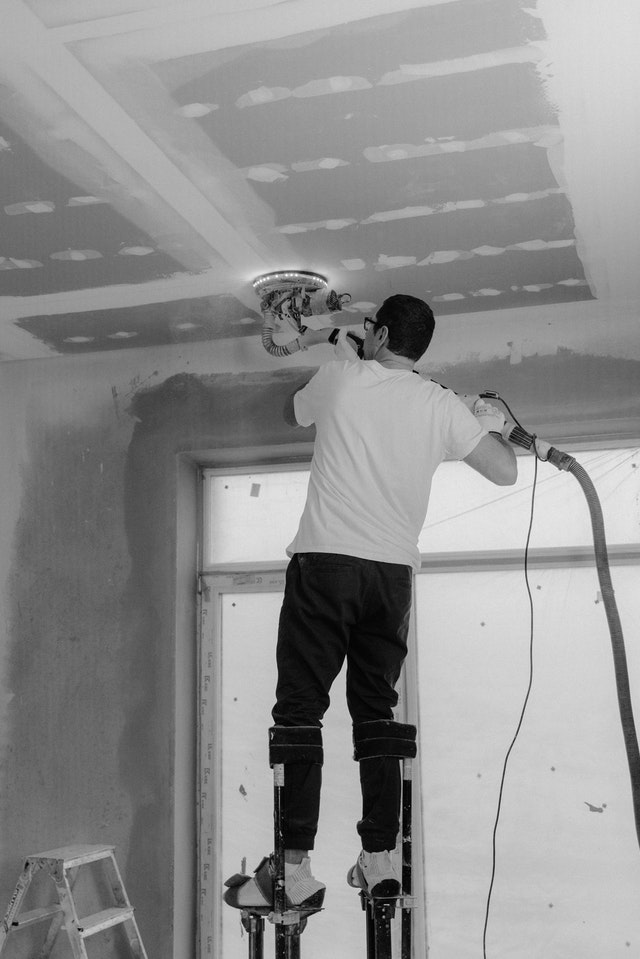Selecting Drywall
This is an excerpt from the Book called “Ultimate Guide Drywall “ by John D.Wagner. Continue reading to learn more about Selecting Drywall, thanks to the author.
As discussed, drywall panels are available in a variety of sizes. The standard for most residential work is the ½-inch-thick panel. Larger ⅝-inch panels are not usually used in houses due to the extra weight and cost. It may not seem like much, but that extra ⅛ of an inch makes the larger panels much heavier and harder to handle, especially for someone working alone. The lighter ⅜-inch-thick panels are good for resurfacing work when a wall is so scarred that spackling cannot save it. The ¼-inch-thick panel is the most economical, but most people, including most pros, don’t like to use them because the sheets are very whippy and snap too easily during handling. Of course, be sure to check local building codes when planning a large-scale new construction or remodeling project.
As is the case with plywood and other construction sheet goods, the standard size for drywall panels is 4×8 feet, although other sizes are available. The standard size works well with both 16-inch and 24-inch-on-center framing.
Two common variations of standard panels are manufactured with qualities that improve drywall performance in key areas: panels impregnated with fire retardants, referred to as FC or fire code panels “Fire Resistant drywall,” and drywall panels that are treated to resist moisture-“Dealing with Moisture”.
From the standpoint of handling, smaller sheets are best-easier to carry and install. But from the stand-point of taping and finishing joints, larger sheets are better because they cover more wall area. The best approach is to use the largest sheets practicable-large enough to eliminate some seams and taping time but not large enough to create major handling problems.
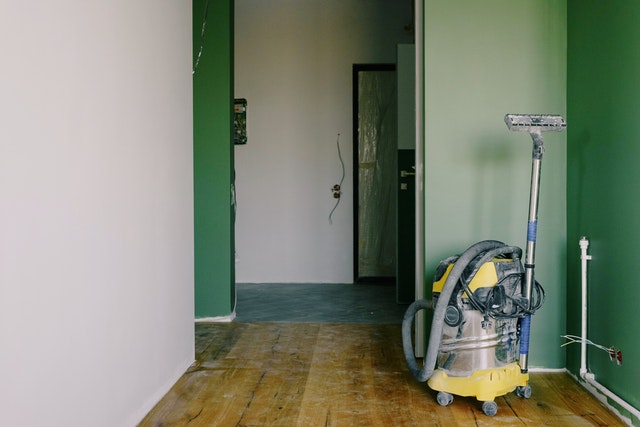
Cover Treatments & Specialty Drywall Panels
- Flexible Drywall: This ¼-inch-thick material is intended for tighter curved-wall or archway applications and is often applied in two layers. Flexible gypsum drywall has a stronger liner and face paper than regular ¼-inch-thick drywall and resists cracking more effectively.
- Abuse-Resistant Drywall: Compared with standard gypsum panels, abuse-resistant panels have a heavier paper covering and a reinforced core. These panels give greater resistance to damage. Available in ½-and ⅝-inch thickness, this stock is recommended for playrooms, high-traffic hallways, and garage and basement walls that are likely to sustain damage from bikes or tools.
For this type of usage, manufacturers have recently developed a gypsum/ wood fiber backing that resists dents and punctures better than paper and increases panel strength. Stock with this backing costs more than ordinary gypsum drywall and usually must be special-ordered.
- Moisture-Resistant Drywall: Also called MR (moisture-resistant) board, WR (water-resistant) board, Greenboard, or Blueboard, this gypsum drywall (which has a pale green or blue face) resists moisture but is not waterproof. It can withstand the high levels of humidity that often occur in bathrooms, kitchens, and laundry rooms. These panels make a good base for any kind of tile attached with a mastic. Avoid hanging the material over an existing vapor barrier, because this would trap moisture, causing the drywall to degrade over time. Moisture –resistant drywall can be finished and painted or wallpapered like regular drywall panels. It should be installed on studs framed 16 inches on center.
- Cement Board: Also called cementitious panel, Durock, Hardibacker, WonderBoard, or Dens-Shield, this ½- or ⅝-inch-thick stock comes in 5- or 8-foot lengths and in widths of 32, 36, and 48 inches. Unlike gypsum-based products, this material consists of a Portland cement core sandwiched between layers of a polymer-coated glass fiber mesh. It provides excellent fire and water resistance and makes an ideal backing for tile, especially in high-moisture areas such as bathroom and kitchen walls and floors. It also offers a superior underlayment for use with slate and quarry tile. Each cement-based board has a rough and a smooth side. Install the rough sided facing outward when attaching tiles with mortar (such as QuickSet) or with the smooth side out when using adhesive or mastic. Some cementitious products are UL-listed for use as wall shield and floor protectors in rooms with exposed heaters and wood stoves. Maximum stud spacing for application is 16 inches on center.
- Fire-Resistant Drywall: Available in ½-and ⅝-inch thicknesses, this material, known as Firecode Core, Fire-shield, Fireguard, or Fi-Rock, is fire resistant. This means that it meets or exceeds the ASTMC36 rating for Type X fire-resistant gypsum board, which specifies that glass fibers be embedded in its core, enabling it to resist fire for a certain amount of time beyond conventional gypsum drywall. Typically, a ½-inch-thick panel is rated to contain a fire for 45 minutes, a ⅝-inch-thick panel for 60 minutes. Codes often require these panels for party walls (between condos or apartments), for ceilings that adjoin other units, and for rooms that are susceptible to fire, such as furnace rooms, attached garages, and kitchens.
- Foil-Backed Board: Where a vapor barrier is required, foil-backed panels may be useful. This stock is made by laminating aluminum foil (backed by kraft paper) to the surface of a gypsum drywall panel. The foil face increases the insulation value of the drywall and helps create a vapor barrier if he foil face is placed against the studs on the interior side of exterior walls. As with any vapor barrier, this helps prevent moisture in the living area from entering the stud bays. Avoid using foil-backed panels as a base for tiles or in any area where another wall covering could trap moisture within the core of the panel. Also, avoid using this material in air-conditioned structures that ordinarily withstand frequent high outdoor temperatures and humidity.
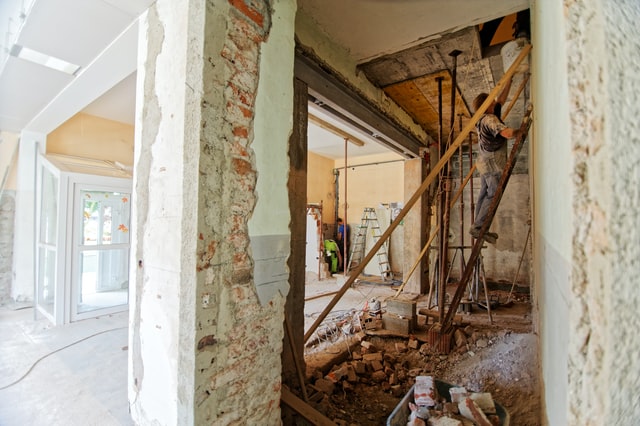
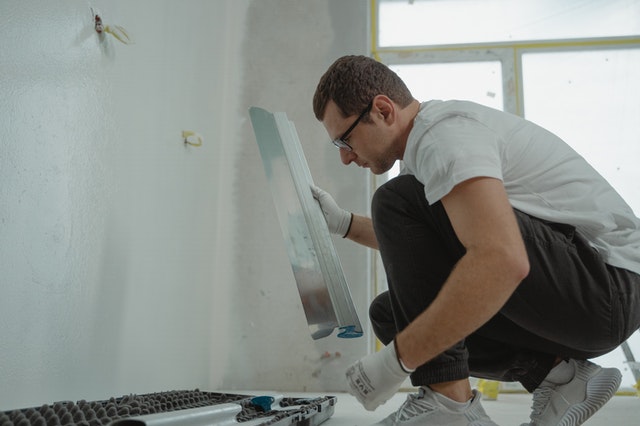
- Sound-Deadening Board: Sound-deadening in drywall application has more to do with wall design than with the use of any particular drywall product. Sound-deadening materials are available, but they usually are sold as insulation, such as USG’s Thermafiber. Sound-deadening techniques typically combine the use of two layers of drywall with a sound-deadening blanket, an acoustical sealant, and a wall system of studs and metal channels that creates baffles within a wall.
- Ceiling Panels: A number of manufacturers make special panels for use in ceiling applications, particularly when the ceiling is built with wider truss spans (24 inches on center). Designed to be both lighter and stronger than standard stock; these panels resist sagging, install more easily, and in some cases cost less than regular gypsum drywall.
- Vinyl-Faced Panels: Available in a wide variety of colors and patterns, these gypsum drywall panels are attached using adhesive and special fasteners (similar to finishing nails) and require no edge or joint treatments because they’re trimmed with specially designed vinyl moldings. Butted end joints are difficult to conceal, so avoid using these panels in rooms or on ceilings where end joints will be visible. Panels typically come in ½-inch thickness and in 4-, 8-, 9-, and 10-foot lengths.
- Gypsum Lath: Gypsum lath serves as a base for veneer plaster. Sold under such names as Rocklath, Kal-Kore, and Cameo, gypsum lath provides a fire-resistant underlayment for trowel applications of plaster, replacing wooden lath. It comes in ½-and ⅜-inch thicknesses, with panel sizes ranging from 16×48 inches to 25×96 inches. Although not identical to drywall, gypsum lath can have a gypsum core and often is faced with absorbent paper. The paper draws water away from the freshly applied plaster to keep it from slumping, while several additional layers of treated paper prevent this moisture from seeping into the panel’s core.
The Pros Know
Don’t tear apart your bathroom with a crowbar and then drive down to the local home center assuming they’ll have those ⅝-inch Type X panels and 10-foot MR boards that you’ll need in stock. Many suppliers carry a limited variety of panels on the floor, and you’ll either have to wait for the ones you want to be ordered (and live with your mess) or take what they have.
